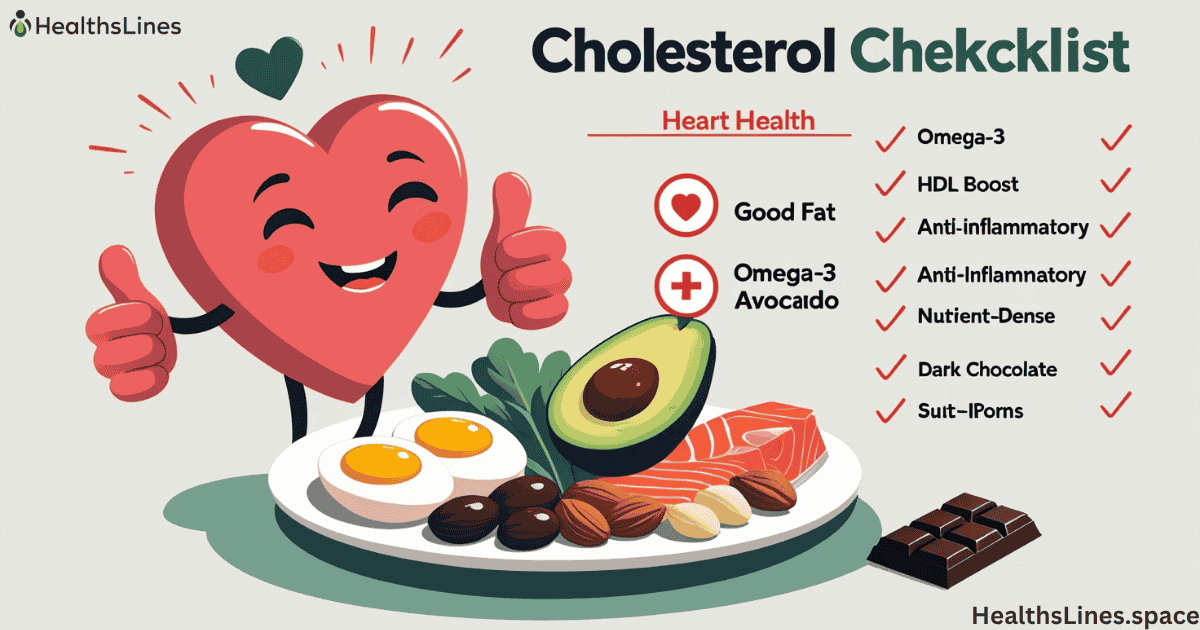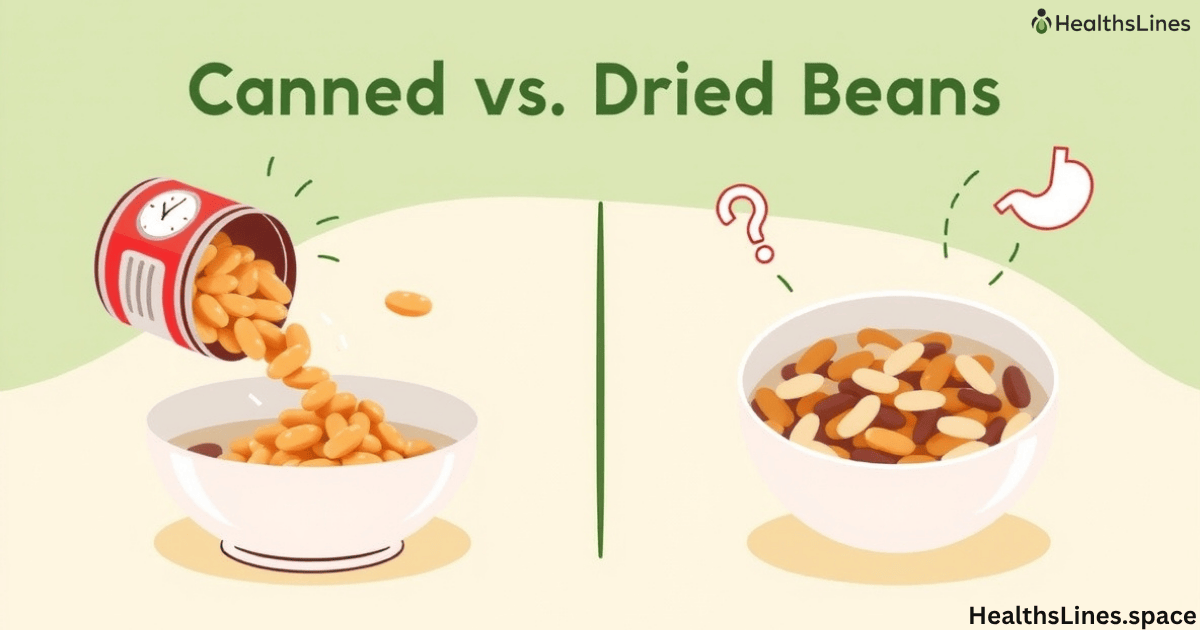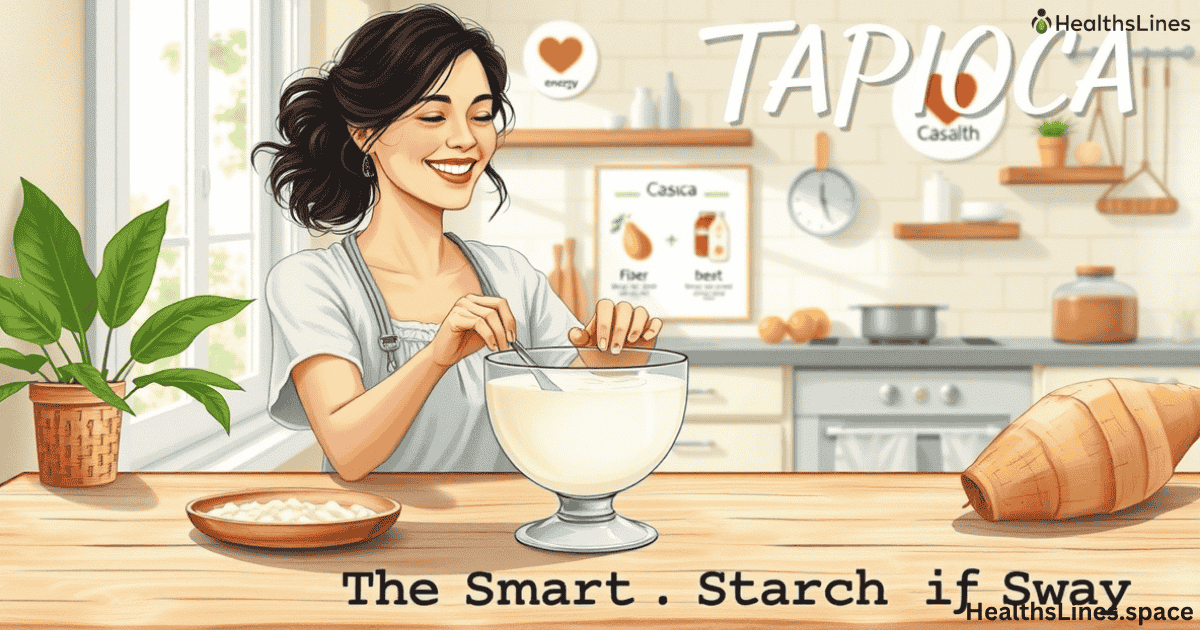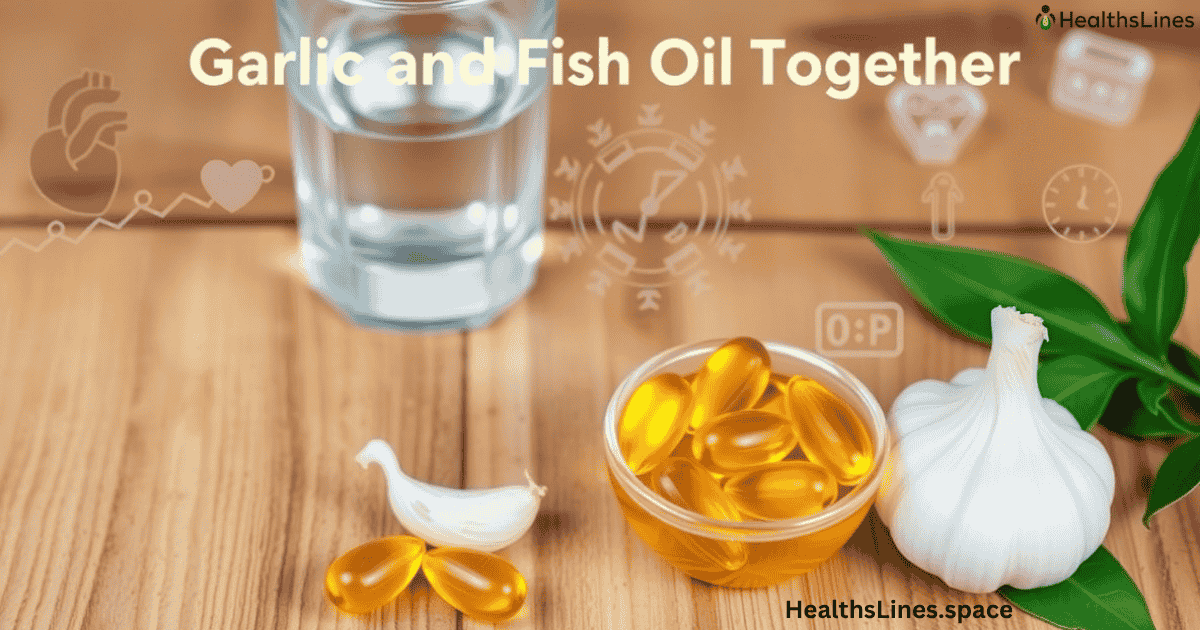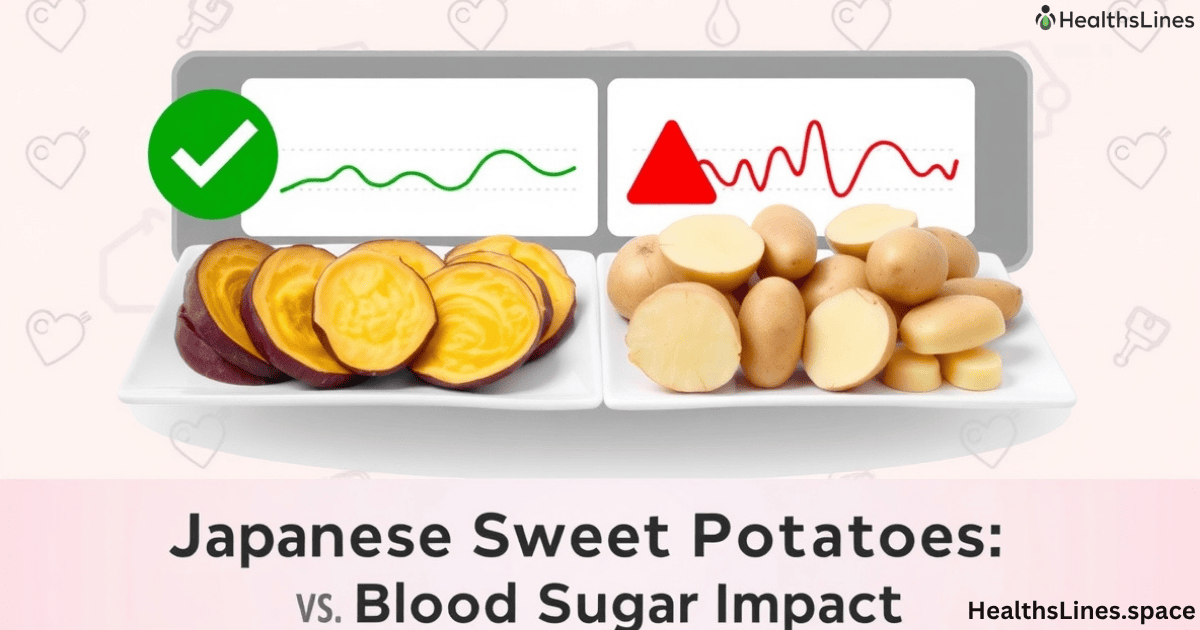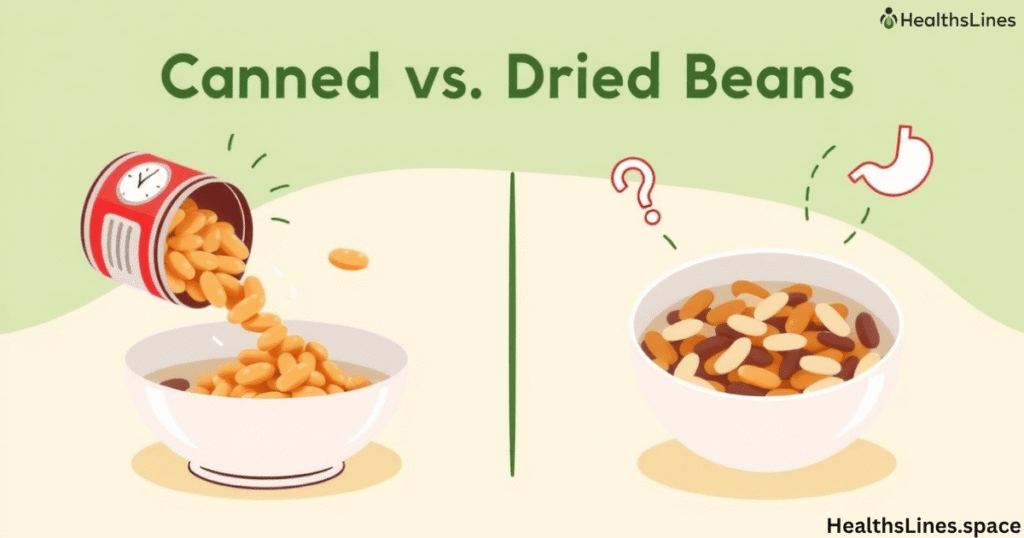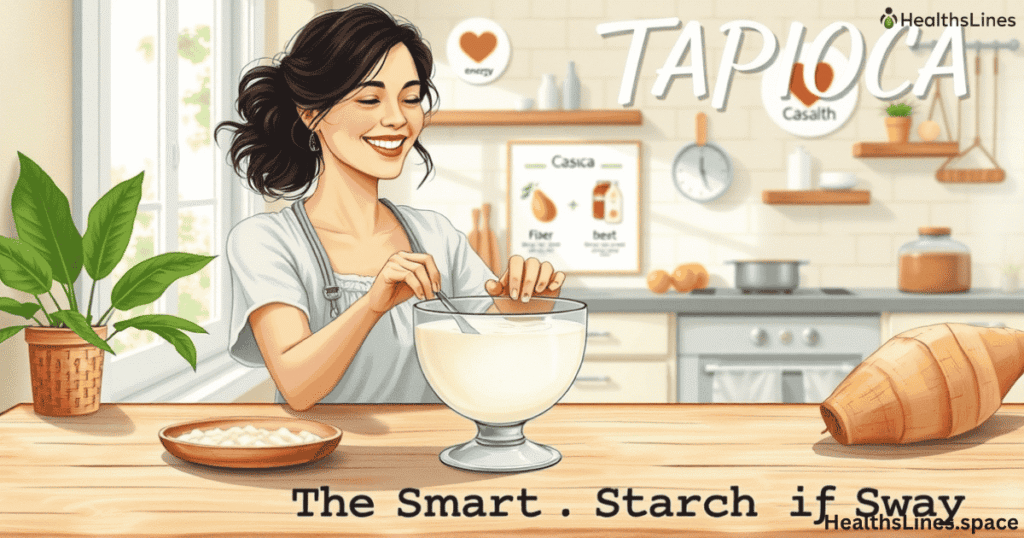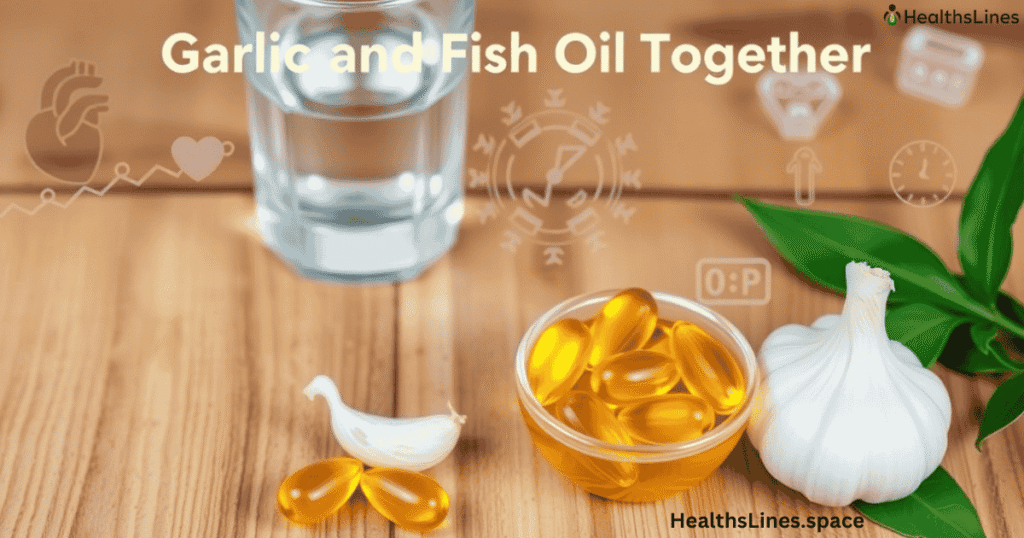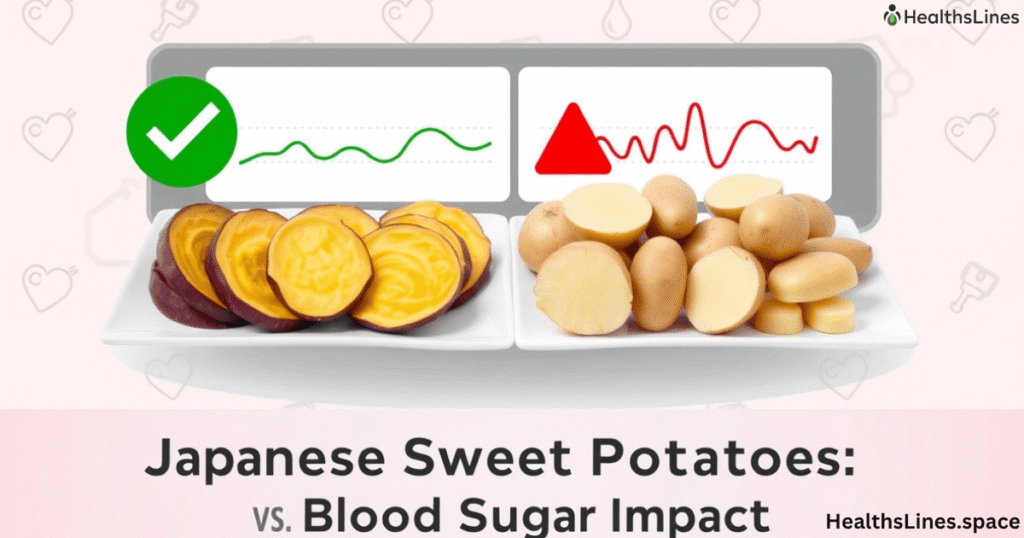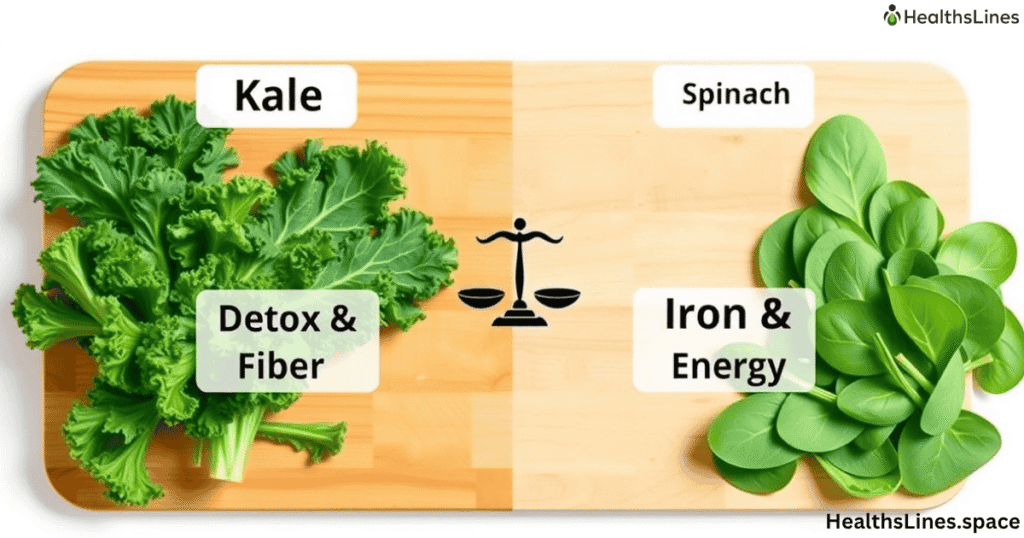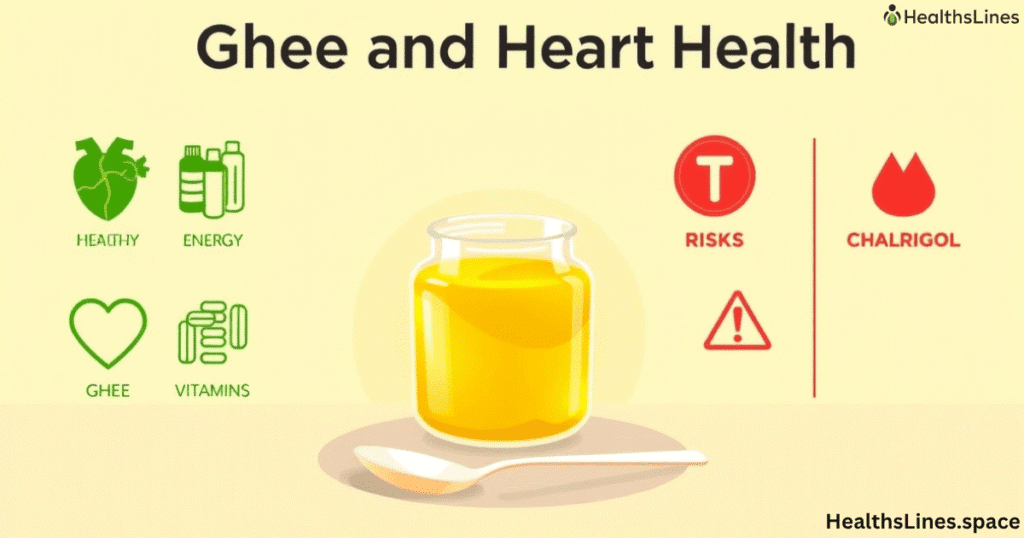Cholesterol is a natural substance that your body needs to stay healthy. It helps build cells, produce hormones, and support brain function. But not all cholesterol-rich foods are good for you. Some can raise your risk of heart disease, while others may actually protect your heart. That’s why it’s important to know which foods high in cholesterol are healthy and which ones are harmful.
In this guide, you’ll learn about 14 high cholesterol foods, broken down into two categories: the good and the bad. We’ll also explain how cholesterol and diet work together and how to make the best food choices for a healthy heart.
What Is Cholesterol and Why It Matters
Cholesterol in food isn’t always the problem. The real issue is how your body processes it. There are two main types: LDL cholesterol (bad) and HDL cholesterol (good). LDL builds up in your arteries and can cause blockages. HDL helps remove LDL from your body.
Your liver makes all the cholesterol your body needs, but dietary cholesterol from food can add more. In some people, eating foods that increase cholesterol can raise LDL levels too much. Others might not be affected as much. What matters more is how much saturated fat and trans fat you eat. These fats can raise LDL and lower HDL, making heart problems more likely.
Healthy High-Cholesterol Foods You Shouldn’t Fear
Some cholesterol-rich foods are full of nutrients and don’t increase heart risks. In fact, they may help your body make more HDL cholesterol and less LDL. These are considered good cholesterol foods when eaten in moderation.
Eggs are often seen as dangerous because of their high dietary cholesterol. One large egg has about 186 mg of cholesterol, almost all in the yolk. But research shows that in most people, eggs don’t significantly raise LDL cholesterol. They’re also rich in protein, choline, and antioxidants like lutein, which are good for the eyes and brain.
Shrimp is another misunderstood food. A 3-ounce serving contains around 166 mg of cholesterol. But shrimp is low in saturated fat and rich in omega-3 fatty acids. Studies show it may even increase HDL cholesterol, helping your heart.
More Nutrient-Packed Cholesterol-Rich Animal Products
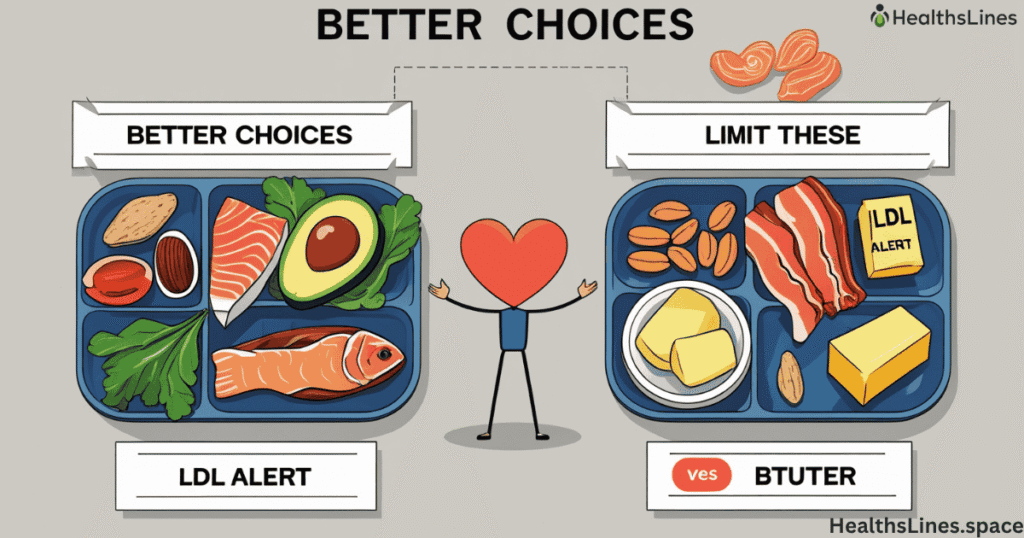
Sardines are tiny fish packed with big health benefits. A 3-ounce portion has about 130 mg of cholesterol, but they also provide calcium, vitamin D, and omega-3s. These help lower inflammation and improve blood vessel health. That’s why many experts recommend them as one of the best foods for cholesterol control.
Organ meats like liver are very high in cholesterol—a slice of beef liver can have over 330 mg. But they’re also loaded with iron, B12, and vitamin A. These nutrients help make red blood cells and support energy. If you don’t have high cholesterol and heart disease, you can enjoy them occasionally.
Cheese often gets blamed for being bad for cholesterol, but the truth is more complex. Cheese is high in fat and cholesterol, but it also contains calcium, protein, and probiotics. Research shows that full-fat dairy like cheese doesn’t always raise blood lipid levels. The key is portion size and type. Aged or hard cheeses tend to be lower in lactose and easier to digest.
Full-fat yogurt is another debated food. It’s rich in probiotics that support gut and immune health. Even though it contains saturated fat and cholesterol, studies show it may improve metabolic health. A good option is unsweetened Greek yogurt with live cultures.
Grass-fed beef is different from regular beef. It has more omega-3 fats and CLA (conjugated linoleic acid), which may help reduce inflammation. While it still contains cholesterol and saturated fat, eating small amounts of lean cuts may be part of a heart-healthy diet.
Table: Healthy Cholesterol-Rich Foods and Their Cholesterol Content
| Food | Serving Size | Cholesterol (mg) | Notes |
| Eggs | 1 large egg | 186 | May increase HDL |
| Shrimp | 3 oz | 166 | Low in fat, rich in omega-3 |
| Sardines | 3 oz | 130 | High in calcium and vitamin D |
| Beef Liver | 3 oz | 330 | Nutrient-dense, eat occasionally |
| Cheese | 1 oz | 30 | Choose aged or hard types |
| Full-Fat Yogurt | 1 cup | 31 | Contains probiotics |
| Grass-Fed Beef | 3 oz | 70 | Rich in omega-3, lean cuts better |
Unhealthy High-Cholesterol Foods That Raise Risk Factors
Some high cholesterol foods come with unhealthy fats, sugar, or salt. These unhealthy high cholesterol foods can raise LDL levels and increase the risk of heart disease. These are the ones you want to limit or avoid.
Fried foods like fried chicken or French fries are among the worst foods for cholesterol. They often contain trans fats and are cooked in cheap oils. Trans fats raise LDL and lower HDL, which is a dangerous combo. They also increase cholesterol and inflammation in the arteries.
Processed meats such as bacon, sausage, and deli meats are high in salt, saturated fat, and cholesterol. A few slices of bacon can have over 30 mg of cholesterol, along with nitrates and other harmful additives. Studies link these cholesterol-rich animal products to a higher risk of heart disease and some cancers.
More Bad Cholesterol Foods That Harm Heart Health
Commercial baked goods like cookies, cakes, and donuts are loaded with saturated fat, trans fat, and sugar. They often contain hydrogenated oils, which are linked to high LDL cholesterol and poor heart health. Even small portions can quickly raise your cholesterol levels and diet risks.
Fatty cuts of red meat, such as ribeye or T-bone steak, are very high in both saturated fat and cholesterol. These are classic foods that raise LDL and should be eaten rarely. Choosing lean cuts or trimming the fat can reduce the harm, but the best move is to limit intake.
Cream-based sauces and dressings, like Alfredo or ranch, are hidden sources of cholesterol and saturated fat. Just a few tablespoons can add up quickly. These sauces often contribute to high cholesterol and heart disease, especially when paired with refined carbs like white pasta or bread.
Fast food items like burgers and fried chicken sandwiches are a double threat. They often have high cholesterol, salt, and unhealthy fats. A single fast food meal can contain over 100 mg of cholesterol, making them clear examples of foods that increase cholesterol and damage artery health.
Packaged snacks like potato chips, crackers, and puffed snacks often contain hidden trans fats. Even if the label says “0g trans fat,” small amounts can still be present. These snacks are part of the cholesterol food list to watch out for.
Table: Unhealthy High-Cholesterol Foods and Risk Factors
| Food | Common Serving | Cholesterol (mg) | Danger |
| Fried Chicken | 1 piece | 110 | High in trans fat |
| Bacon | 3 slices | 30 | Processed meat, nitrates |
| Donuts | 1 medium | 25 | Trans fat and sugar |
| Ribeye Steak | 3 oz | 80 | High saturated fat |
| Alfredo Sauce | 1/4 cup | 45 | Cream-based, fat-heavy |
| Cheeseburger (Fast Food) | 1 sandwich | 100+ | Multiple risk factors |
| Potato Chips | 1 oz | 0-5 | Hidden trans fats |
Cholesterol and Heart Health: What Can Go Wrong?
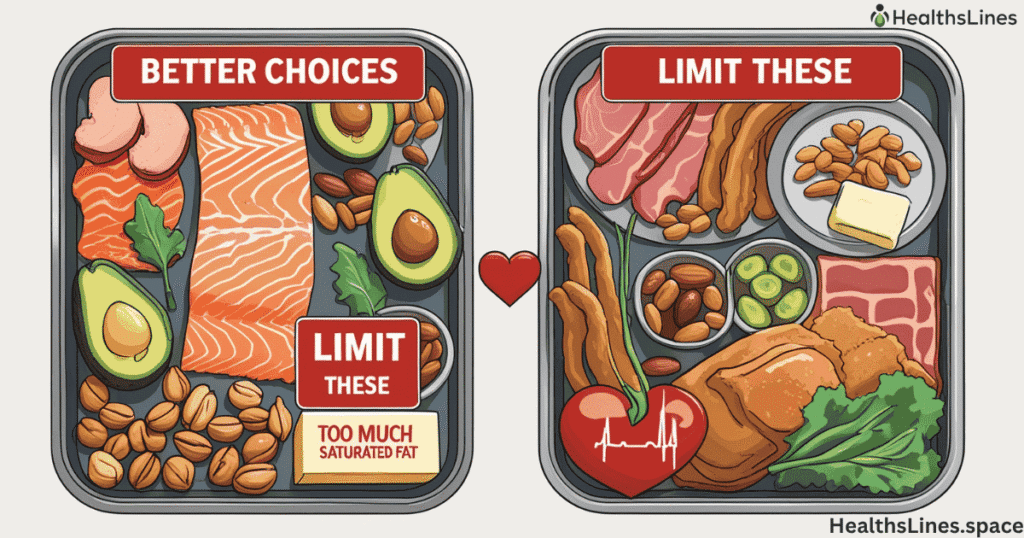
Eating too many foods that raise LDL can lead to clogged arteries. Over time, this can cause heart attacks, strokes, or heart failure. Your body stores excess cholesterol in artery walls, creating plaque that narrows your blood vessels. This is called atherosclerosis, and it’s one of the main causes of diet-related heart disease risks.
According to the CDC, nearly 38% of American adults have high cholesterol. Many don’t know it until it causes a problem. That’s why doctors recommend checking your blood lipid levels regularly. Knowing your numbers helps you choose the best diet for high cholesterol.
Balancing Cholesterol Through Smart Diet Choices
Changing your diet is one of the best ways to lower LDL cholesterol and raise HDL cholesterol. Start by replacing saturated and trans fats with unsaturated fats. Good options include olive oil, avocados, and nuts. These support heart health without raising LDL.
Eating more fiber is also helpful. Soluble fiber found in oats, beans, apples, and flaxseeds helps remove cholesterol from your body. These are cholesterol-lowering foods that can be added to any meal. A diet rich in vegetables, fruits, whole grains, and lean protein gives the best results.
Should You Worry About Dietary Cholesterol?
Not everyone reacts to dietary cholesterol the same way. Some people’s cholesterol levels stay stable no matter what they eat. Others, called “hyper-responders,” see a rise in LDL after eating foods high in cholesterol. But even for them, not all cholesterol-rich foods are bad.
The focus should be on the type of fat, the processing method, and the overall quality of the food. A hard-boiled egg is not the same as a deep-fried donut, even if both have cholesterol. Looking at the full picture of your cholesterol and diet is what matters most.
Conclusion
Knowing which cholesterol-rich foods help or hurt your heart is the first step to better health. Many healthy high cholesterol foods, like eggs, shrimp, and sardines, offer important nutrients that outweigh their cholesterol content. Meanwhile, unhealthy high cholesterol foods like fried snacks, processed meats, and sugary baked goods pose real risks.
Aim to eat more cholesterol-lowering foods, reduce saturated fat, and avoid anything with trans fat. Always check labels and choose whole foods over processed ones. This approach helps balance your cholesterol levels and diet and supports long-term heart health.
Sources
Harvard T.H. Chan School of Public Health
American Heart Association
Centers for Disease Control and Prevention (CDC)
